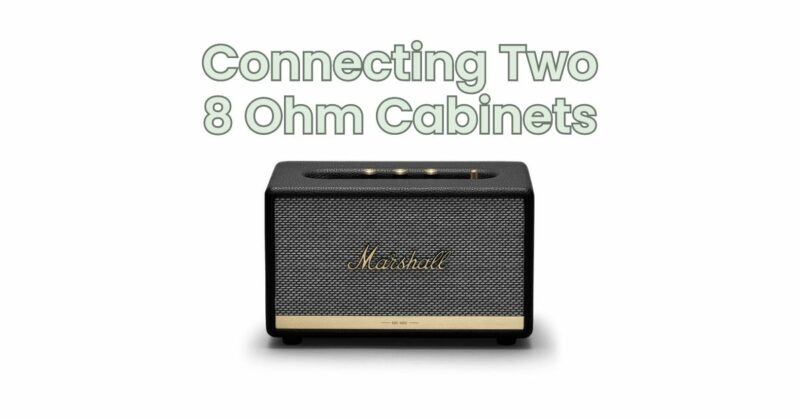Connecting multiple speaker cabinets is a popular choice for guitarists looking to expand their sound, increase volume, and create a more immersive sonic experience. When connecting two 8-ohm cabinets, it’s important to understand the implications on impedance, power distribution, and overall performance. In this article, we will guide you through the process of connecting two 8-ohm cabinets, discussing the benefits, considerations, and best practices for achieving optimal sound quality and power handling.
Understanding Impedance and Power Handling: Impedance and power handling are essential concepts to grasp when connecting multiple speaker cabinets:
- Impedance: Impedance refers to the opposition to electrical current flow and is measured in ohms (Ω). When connecting multiple speaker cabinets, the total impedance changes depending on the wiring configuration.
- Power Handling: Power handling denotes the maximum power (wattage) that a speaker cabinet can handle without distortion or potential damage. It’s crucial to ensure that the connected cabinets can handle the power output from the amplifier.
Connecting Two 8-Ohm Cabinets: Series vs. Parallel Wiring:
- Series Wiring: In series wiring, the positive (+) terminal of one cabinet is connected to the negative (-) terminal of the other cabinet. The remaining positive and negative terminals are then connected to the amplifier or audio source. In this configuration, the total impedance increases.
- Parallel Wiring: In parallel wiring, the positive (+) terminals of both cabinets are connected together, and the negative (-) terminals are connected together as well. The combined positive and negative terminals are then connected to the amplifier or audio source. In this configuration, the total impedance decreases.
Best Practices for Connecting Two 8-Ohm Cabinets:
- Series Wiring Considerations:
- Verify that the total impedance resulting from series wiring does not fall below the minimum impedance rating supported by your amplifier. Avoid going below the recommended impedance to prevent damage to your equipment.
- Ensure that the power handling of each cabinet is compatible with the power output of your amplifier to avoid overpowering the speakers.
- Parallel Wiring Considerations:
- Confirm that the total impedance resulting from parallel wiring does not exceed the maximum impedance rating supported by your amplifier. Avoid going above the recommended impedance to prevent inefficient power distribution or potential damage to your amplifier.
- Ensure that the power handling of each cabinet is compatible with the power output of your amplifier to avoid overpowering the speakers.
- Speaker Cable Selection:
- Choose high-quality speaker cables with appropriate gauge thickness to handle the power requirements and minimize signal loss.
- Use speaker cables of sufficient length to connect the cabinets without tension or strain, allowing for proper positioning on stage.
- Total Impedance Calculation:
- For series wiring, add the individual impedance values of the cabinets to determine the total impedance.
- For parallel wiring, calculate the reciprocal of each cabinet’s impedance, add these values together, and then calculate the reciprocal of the sum to determine the total impedance.
- Verify Compatibility:
- Check the specifications of your amplifier to ensure it supports the total impedance resulting from the series or parallel wiring configuration.
- Refer to the manufacturer’s documentation for your speaker cabinets and amplifier for specific recommendations and guidelines.
Conclusion: Connecting two 8-ohm cabinets can significantly enhance your sound, increase volume, and create a more immersive sonic experience. By understanding the concepts of impedance and power handling, and following the best practices outlined in this article, you can successfully connect two 8-ohm cabinets. Consider the benefits and considerations of both series and parallel wiring configurations, ensuring compatibility with your amplifier and the power handling capabilities of the speaker cabinets. With proper connections and impedance management, you can unleash the full potential of your guitar rig, achieving a powerful and captivating sound that will elevate your musical performances.


